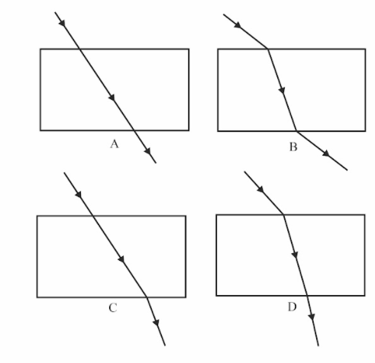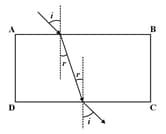Refraction through Glass Slab
Refraction through Glass Slab: Overview
This Topic covers sub-topics such as Total Internal Reflection, Critical Angle, Emergent Ray, Angle of Emergence, Refraction from Single Slab, Shifts Due to a Glass Slab, Lateral Shift Due to Glass Slab and, Vertical Shift Due to Glass Slab
Important Questions on Refraction through Glass Slab
The lateral shift increases as the angle of incidence increases.
Define normal shift. Obtain an expression for normal shift when an object in a denser medium is viewed from a rarer medium.
The lateral shift produced by a glass slab increases with a decrease in the thickness of the glass slab.
Draw a ray diagram showing the phenomenon of total internal reflection between water-air interface.
Define total internal reflection. What are the conditions necessary for it to take place?
Find the critical angle for the crown glass-air boundary. Given and
Define critical angle. What is the formula for calculating critical angle?
Draw ray diagram showing lateral shift of ray through glass slab.
A glass slab ray diagram is given below as a reference. If the incident angle is , what is the angle of emergence?
The time difference between actual sunset and the apparent sunset is about _____ minutes.
The path of a ray of light coming from air passing through a rectangular glass slab traced by four students are shown as A, B, C and D in the figure. Which one of them is correct?

Which of the following diagrams depict the correct representation of angle of incidence. (i), angle of refraction (r) and angle of emergence?
In the following diagrams, which shows the correct marking of lateral displacement?
Four student took observations in tracing the path of light through glass slab for the given angle of incidence. They measured angles of refraction and emergence from their observations given in table below. Select the student who performed the experiment in correct manner.
| Student A | (i) | |||
| (ii) | ||||
| Student B | (i) | |||
| (ii) | ||||
| Student C | (i) | |||
| (ii) | ||||
| Student D | (i) | |||
| (ii) |
